In Depth Buying Guide: The French Press
As a hot wind brushed my face carrying the scent of pine needles made sweet by a rising sun in the Eastern Sierra's of California, I could not help but smile as I enjoyed my morning cup of "campfire coffee" on a backpacking trip last summer. I thought with amusement, here I am, thousands of miles and an entire world away from the bustling streets and cafes of Paris and yet in the most rustic of settings, I was enjoying coffee that equaled or surpassed anything I had ever enjoyed in France. I had accomplished this feat with no electronic machine, just some hot water, ground coffee and I must give the French credit where credit is due. After all, it is thanks to their simple yet ingenious designed French Press that I was able to enjoy the highest quality coffee in the most unique, remote, and beautiful of all settings.
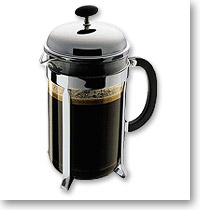 In existence for over a hundred years, the French Press produces a flavorful, strong, and superior coffee within minutes in any location and under any circumstance. Thanks to its press pot design, the user has complete control over extraction and steeping time of the coffee. In addition, the French Press uses a filter of metal and nylon as opposed to a traditional paper filter found in drip coffee makers. Paper filters block flavor enhancing colloids and lipids where metal and nylon filters allow them to pass through creating a smoother, thicker, and richer tasting cup of coffee. While extremely user friendly, a successful French Press brew relies completely on two components: the grind and the plunge. Do not worry, with BeverageFactory.com as your guide these strange sounding actions will be easier to master than the correct pronunciation of Champs de Elysees.
In existence for over a hundred years, the French Press produces a flavorful, strong, and superior coffee within minutes in any location and under any circumstance. Thanks to its press pot design, the user has complete control over extraction and steeping time of the coffee. In addition, the French Press uses a filter of metal and nylon as opposed to a traditional paper filter found in drip coffee makers. Paper filters block flavor enhancing colloids and lipids where metal and nylon filters allow them to pass through creating a smoother, thicker, and richer tasting cup of coffee. While extremely user friendly, a successful French Press brew relies completely on two components: the grind and the plunge. Do not worry, with BeverageFactory.com as your guide these strange sounding actions will be easier to master than the correct pronunciation of Champs de Elysees.
The Grind
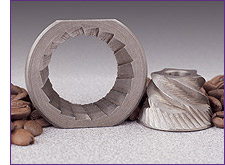 Before you can boil, plunge, sip, enjoy, you must first achieve the correct grind coarseness appropriate for a French Press. While a drip coffee maker requires a grind roughly the size of unrefined sugar, a French Press grind needs to resemble the look and feel of sea salt. French Press grinds can be so coarse they look nearly flaky which insures that the grind will not pass through the French Press filter causing small sediments to impede the feel and taste of your coffee. In general, metal filters require a coarser grind than nylon filters and it may take a couple of tries to figure out the exact grind needed to produce the perfect brew from your own French Press.
Before you can boil, plunge, sip, enjoy, you must first achieve the correct grind coarseness appropriate for a French Press. While a drip coffee maker requires a grind roughly the size of unrefined sugar, a French Press grind needs to resemble the look and feel of sea salt. French Press grinds can be so coarse they look nearly flaky which insures that the grind will not pass through the French Press filter causing small sediments to impede the feel and taste of your coffee. In general, metal filters require a coarser grind than nylon filters and it may take a couple of tries to figure out the exact grind needed to produce the perfect brew from your own French Press.
The Plunge
Brewing with a French Press is not so much about the technical but rather the technique. The key to brewing a rich and almost syrupy cup of coffee is definitely in the plunge. However, there are still some technical requirements that must be met. As discussed, appropriate grind coarseness is must be met as must coffee to water ratio. With a French Press, the following rule of thumb usually applies:
1 tablespoon of ground coffee per 4 oz of water
Another technical component to consider when brewing with a French Press is water temperature which should remain just under boiling or between 195 degrees to 205 degrees Fahrenheit. Water should be poured over the coffee grinds evenly with a slow and steady hand in order to insure all grinds are saturated and maximum extraction occurs. Keep in mind to leave at least an inch space between your water level and the open top of the French Press. This prevents liquid from overflowing when you displace the water with your plunge.
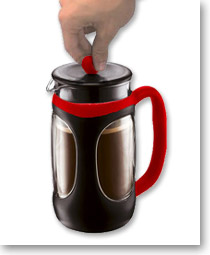 Now that your hot water has been added and poured evenly over the coarsely ground coffee, you are ready to add the lid and filter of the French Press which will retain the heat of the water. While the plunger may be protruding precariously from the top of the French Press, resist your urge to plunge it…the time is not yet right! You must first let your coffee steep for 3 to 4 minutes. At this time, the hot water is releasing the coffee ground's flavor and body into your brew.
Now that your hot water has been added and poured evenly over the coarsely ground coffee, you are ready to add the lid and filter of the French Press which will retain the heat of the water. While the plunger may be protruding precariously from the top of the French Press, resist your urge to plunge it…the time is not yet right! You must first let your coffee steep for 3 to 4 minutes. At this time, the hot water is releasing the coffee ground's flavor and body into your brew.
Okay, now you are ready to use your plunge technique! Slowly and evenly and with the opening of the French Press facing away from you, push down your presses' plunger. The plunger will meet a bit of resistance however be sure to maintain a slow and steady amount of pressure as you push downwards. One last tip, you must keep the filter completely flat to avoid coffee grounds escaping into your brew.
Enjoy!
Okay, now that you have proven you can plunge with the best of them it is time to enjoy the fruits of your labor. Pour yourself a rich and caramel like brew of coffee from a truly unique coffee maker. If you happen to have some coffee in the French Press left over and you plan on drinking it, it is a good idea to remove it from the carafe as it will become over extracted and burnt tasting if left to the French Presses own devices.


 Single Faucet Kegerator Beer Dispensers
Single Faucet Kegerator Beer Dispensers Dual Faucet Two Tap Kegerators
Dual Faucet Two Tap Kegerators Triple Faucet Three Tap Kegerators
Triple Faucet Three Tap Kegerators Undercounter Built-In Kegerators
Undercounter Built-In Kegerators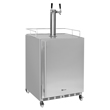 Outdoor Kegerator Beer Dispensers
Outdoor Kegerator Beer Dispensers Commercial Kegerators
Commercial Kegerators Mini Kegerators
Mini Kegerators Cold Brew & Nitro Coffee Dispenser Kegerators
Cold Brew & Nitro Coffee Dispenser Kegerators Home Brew Kegerators
Home Brew Kegerators Carbonated Water Kegerators
Carbonated Water Kegerators 15" Kegerators
15" Kegerators Kombucha Equipment
Kombucha Equipment Guinness® Dispensing Kegerators
Guinness® Dispensing Kegerators Wine Kegerators
Wine Kegerators Kegerator Cabinets
Kegerator Cabinets Kegerator Covers and Accessories
Kegerator Covers and Accessories Kegerators
Kegerators Kegerator Conversion Kits
Kegerator Conversion Kits Kegs & Keg Accessories
Kegs & Keg Accessories Beer Faucets
Beer Faucets Beer Shanks
Beer Shanks Draft Beer Towers
Draft Beer Towers Keg Taps Couplers
Keg Taps Couplers Regulators & Gas Equipment
Regulators & Gas Equipment Beer & Gas Line Hose
Beer & Gas Line Hose Co2 and Nitrogen Air Tanks
Co2 and Nitrogen Air Tanks Beer Line Cleaning Equipment
Beer Line Cleaning Equipment Drip Trays
Drip Trays System Fittings
System Fittings Jockey Boxes
Jockey Boxes Keg Beer Party Pumps
Keg Beer Party Pumps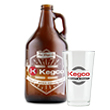 Glassware
Glassware Guinness® Dispensing Equipment
Guinness® Dispensing Equipment Remote Glycol Systems
Remote Glycol Systems Wine Cooler Refrigerators
Wine Cooler Refrigerators Wine Cellar Cabinets
Wine Cellar Cabinets Wine Racks
Wine Racks Cooling Units
Cooling Units Wine Dispensing Systems
Wine Dispensing Systems Wine Accessories
Wine Accessories Wine Making
Wine Making Nitro Hot Draft System
Nitro Hot Draft System Ready to Drink Bag-in-a-Box Coffee Dispensing Equipment
Ready to Drink Bag-in-a-Box Coffee Dispensing Equipment Nitrogen Infusers
Nitrogen Infusers Nitrogen Tanks & Generators
Nitrogen Tanks & Generators Nitrogen Beer Regulators
Nitrogen Beer Regulators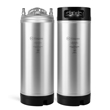 Nitro Cold Brew Coffee Kegs
Nitro Cold Brew Coffee Kegs Cold Brewed Coffee Tools
Cold Brewed Coffee Tools Cleaning Equipment
Cleaning Equipment Outdoor Appliances
Outdoor Appliances ADA Appliances
ADA Appliances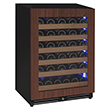 Panel Ready Appliances
Panel Ready Appliances Commercial Grade Appliances
Commercial Grade Appliances Beverage Centers
Beverage Centers Refrigerators
Refrigerators Drawer Refrigerators
Drawer Refrigerators Ice Makers
Ice Makers Water Dispensers & Accessories
Water Dispensers & Accessories Freezers
Freezers Home Brew Equipment Kits
Home Brew Equipment Kits Fermentation Equipment
Fermentation Equipment Boiling and Mashing Equipment
Boiling and Mashing Equipment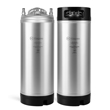 Home Brew Beer Kegs
Home Brew Beer Kegs Home Brew Kegerator Conversion Kits
Home Brew Kegerator Conversion Kits Brewing Tools
Brewing Tools Home Brew Ingredients
Home Brew Ingredients Cleaning Chemicals
Cleaning Chemicals Test Equipment
Test Equipment Home Brew Beer Bottles and Bottling Equipment
Home Brew Beer Bottles and Bottling Equipment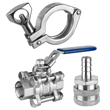 Brewery Fittings
Brewery Fittings Draft Beer Equipment
Draft Beer Equipment Homebrewing Equipment
Homebrewing Equipment Wine Equipment
Wine Equipment Luxury Appliances and Refrigeration
Luxury Appliances and Refrigeration Coffee Equipment
Coffee Equipment Kombucha
Kombucha The Beverage Blog
The Beverage Blog Frequently Asked Beer Questions
Frequently Asked Beer Questions Shop by Brand
Shop by Brand Shop by Category
Shop by Category